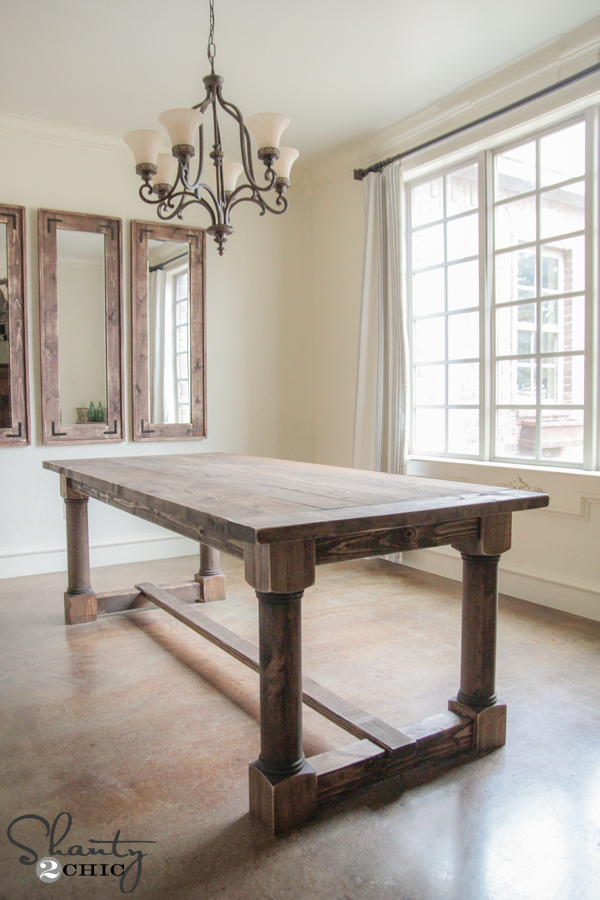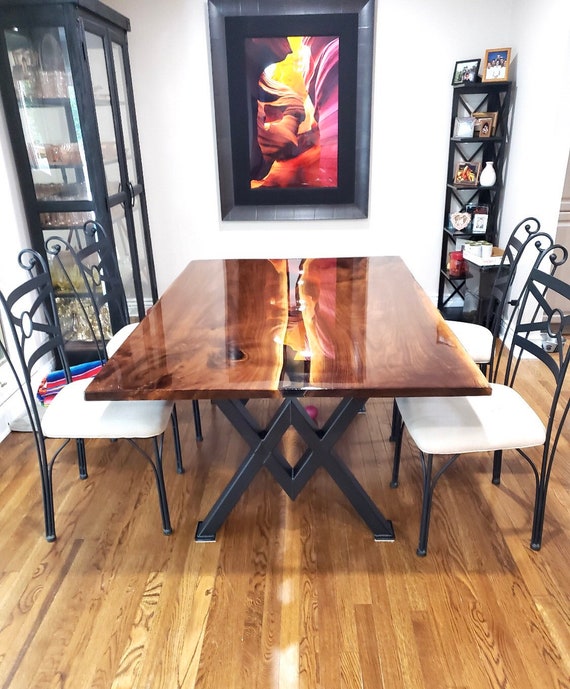Upgrade Your Furniture with Custom Dining Room Table Legs
Upgrade Your Furniture with Custom Dining Room Table Legs
Blog Article
Just How to Choose the Perfect Dining-room Table Legs for Your Home Décor
Choosing the perfect eating room table legs is a nuanced process that calls for cautious factor to consider of numerous elements, including your space restraints, aesthetic preferences, and practical demands. The interplay in between styles, dimensions, and products can dramatically influence the setting of your eating location, making it necessary to approach this choice methodically.
Assess Your Eating Room
Assessing your dining room is critical for picking the right table legs that complement both looks and capability. Begin by measuring the dimensions of your dining area, including ceiling height, flooring area, and closeness to various other furniture. This info will certainly aid establish the ideal size and elevation of your eating table, which straight influences the option of table legs.
Following, think about the style and format of your dining room. For example, an open-concept design might benefit from table legs that offer visual agility, such as slender steel or acrylic alternatives. On the other hand, a more standard setup might call for strong wooden legs that supply a feeling of permanence.
Examine the existing shade scheme and products in your dining location. Integrating the table legs with these components develops a natural look that enhances the general decor.
Eventually, an extensive analysis of your dining room will assist you in making an informed choice, ensuring that your table legs not just boost the aesthetic charm however likewise serve practical purposes.
Consider Your Style Preferences
When picking dining area table legs, it is necessary to review your individual style choices, as they substantially influence the general visual of your dining room. Your option of table legs can either enhance or contrast with existing decor, making it critical to align them with your preferred indoor design style.
If your home leans in the direction of a modern aesthetic, consider streamlined metal or minimal wood legs that give a clean, uncluttered look. For an extra traditional strategy, luxuriant wood legs with intricate makings can include a touch of sophistication and refinement. Industrial designs profit from durable, raw products such as reclaimed timber and steel mixes, showing a tough beauty.
Furthermore, farmhouse and rustic designs frequently favor sturdy, chunky legs that evoke a sense of heat and convenience. On the other hand, if your design is eclectic, you could select unusual shapes or a mix of products to develop aesthetic passion.

Evaluate Product Options
The choice of material for eating space table legs plays an essential duty in both toughness and visual charm. Typical materials consist of timber, steel, and composite choices, each offering distinct characteristics that can influence the total appearance and long life of your table.
Wood is a traditional selection, recognized for its warmth and versatility. Woods like oak and walnut offer exceptional toughness and can be completed in numerous discolorations to match any type of decor. Softwoods like yearn are more vulnerable to damages and scrapes, making them less optimal for high-traffic areas.
Metal legs, typically crafted from steel or light weight aluminum, radiate modernity and industrial charm. They are highly sturdy and resistant to use, making them suitable for households with youngsters or frequent events (dining room table legs). In addition, metal can be ended up in numerous colors, enhancing the customization possibilities
Composite products, such as MDF or laminate, offer affordability and varied layouts. While commonly less sturdy than solid wood or steel, they can still supply an elegant appearance and are often very easy to keep.
Ultimately, the product you choose ought to straighten with your way of living, aesthetic choices, and the level of usage your eating table will experience.
Determine Elevation and Dimension
Picking the appropriate elevation and size for your dining-room table is necessary for both capability and convenience. The standard height for eating tables typically ranges from 28 to 30 inches, allowing enough legroom for a lot of individuals when seated. Nevertheless, it is important to consider the dimensions of your eating room and the types of chairs you prepare to make use of.

Furthermore, think about the proportions of your dining-room. A bigger table in a spacious area can develop a grand setting, while a smaller table works well in more intimate setups. Inevitably, the best elevation and size will certainly balance with your total style and improve the eating experience for you and your guests.
Explore Customization Possibilities

In addition, the layout of the legs can be customized to fit numerous designs, such as rustic, modern, or industrial. As an example, conical legs can evoke a mid-century modern feel, while beefy, block-style legs might resonate with standard or farmhouse decoration.
Home owners can additionally discover color surfaces, from natural wood stains to paint, allowing them to match or comparison with the table top and surrounding decoration.
Furthermore, leg height can be readjusted to suit specific seating plans or individual preferences, boosting both comfort and capability.
Finally, distinct embellishments, such as carvings or decorative brackets, can further personalize the table legs, making the eating experience not simply a dish however a statement item in the home. By thinking about these customization alternatives, property owners can develop a dining area table that really reflects their individuality.
Final Thought
Choosing the suitable dining room table legs calls for careful factor to consider of various variables, including the dimensions of the dining room, design preferences, material toughness, and desired height. Personalization options better enhance the ability to accomplish a cohesive visual that matches the general design. By systematically assessing these components, house owners can ensure that the selected table legs not other just meet functional here are the findings demands however also contribute favorably to the eating experience and ambiance of the home.
Picking the optimal dining area table legs is a nuanced process that calls for careful consideration of different components, including your space restraints, aesthetic choices, and sensible requirements.Examining your eating space is crucial for selecting the right table legs that complement both aesthetics and functionality.When establishing dimension, determine the area where the table will be placed to ensure it fits pleasantly, allowing for at least 36 inches of clearance around the table for easy activity. A bigger table in a large area can develop a grand ambiance, while a smaller table functions well in even more intimate setups.Picking the ideal dining space table legs calls for cautious consideration of different aspects, including the dimensions of the eating space, design choices, material longevity, and wanted height.
Report this page